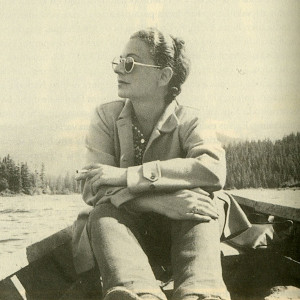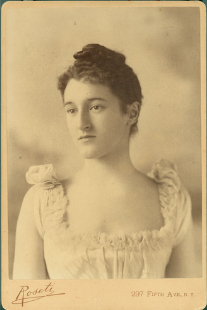Education and personal life
Gertrude Eisendrath was born September 11, 1893, in Racine, Wisconsin, to Benjamin David Eisendrath and Frances Eisendrath. Her family moved to Chicago when she was six. She began her college education at Sweet Briar College in Virginia but quickly transferred to the Lowthorpe School of Landscape Architecture in Groton, Massachusetts, from which she graduated in 1917. [1]

Sweet Briar College is a women's liberal arts college in Sweet Briar, Virginia, United States, about 12 miles (19 km) north of Lynchburg. The college is on 3,250 acres (13,152,283 m2) in the foothills of the Blue Ridge Mountains, on the former estate of the college's founder, Indiana Fletcher Williams. Sweet Briar was established in 1901 as the Sweet Briar Institute and opened its doors in 1906. The college is accredited by the Southern Association of Colleges and Schools Commission on Colleges to award the Bachelor of Arts, Bachelor of Fine Arts, Bachelor of Science, Master of Arts in Teaching, and Master of Education; as of June 2018 it is on "warning" status due to its fiscal-year 2017 finances.

The Lowthorpe School of Landscape Architecture is the shorthand name for a school that was founded in Groton, Massachusetts in 1901 for women to be trained in landscape architecture and horticulture. Under its original name of Lowthorpe School of Landscape Architecture, Gardening, and Horticulture for Women, the college was one of the first in the world to open the profession to women. In 1915 it was renamed the Lowthorpe School of Landscape Architecture for Women, and in 1945 it was absorbed into the Rhode Island School of Design as the Lowthorpe Department of Landscape Architecture.
After college, Kuh undertook an apprenticeship with the landscape architect Ellen Biddle Shipman in Massachusetts. In 1921, she returned to Chicago. [1]

Ellen Biddle Shipman was an American landscape architect known for her formal gardens and lush planting style. Along with Beatrix Farrand and Marian Cruger Coffin, she dictated the style of the time and strongly influenced landscape design as a member of the first generation to break into the largely male occupation.
In 1942, Gertrude married George Kuh, whose ex-wife was Chicago art curator and gallery owner Katharine Kuh. [1] She had been previously married to Jerome Deimel; who died in 1926. [2] She had a son, John (b1926-d2018), with Jerome Deimel. [3]

Katharine Kuh was an art historian, curator, critic, and dealer from Chicago, Illinois. She was the first woman curator of European art and sculpture at the Art Institute of Chicago.



